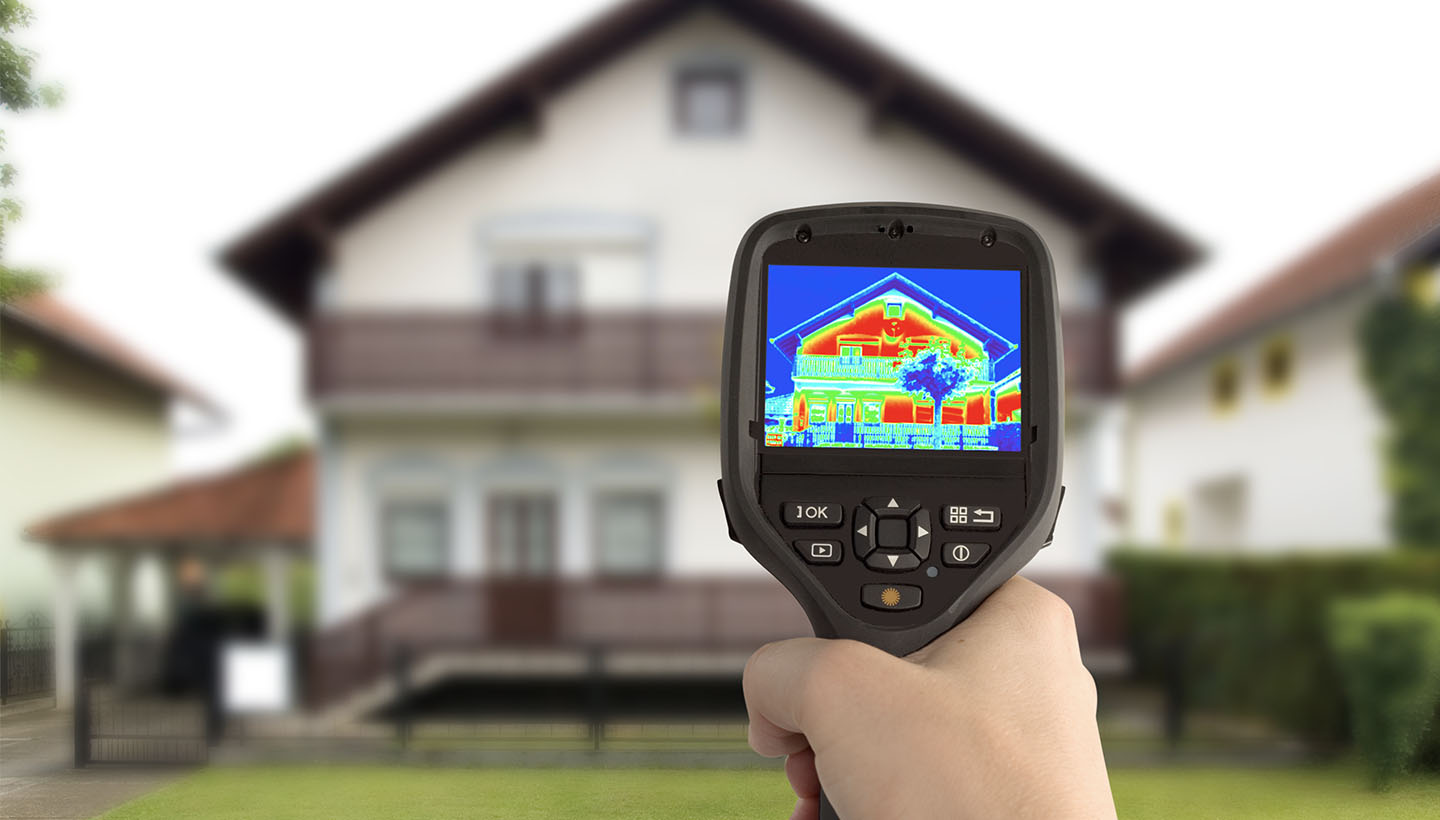
What are Thermal Imaging Inspections?
Thermal imaging technology has come a long way from its roots in the military. More than just night vision, thermal imaging technology, also called thermography, makes it easier to detect issues you can’t spot with your naked eye.
Now, it has found purpose in applications spanning many industries outside of the public sector, including home inspection. So, whether you’re curious about the value of thermal imaging inspections for your clients or ready to add them to your services, this blog is your primer.
Why use thermal imaging during home inspections?
Moisture problems, pipe leaks, HVAC hot spots, foundation cracks, and pest infestations are just a handful of the many concerns addressed during thermal imaging inspections.
When you use a thermal imaging camera to “scan” the interior and exterior of a property, it measures temperature differences in the form of infrared wavelengths. These wavelengths have heat signatures that are analyzed visually during the scan. You’ll see cold areas in a lighter color — indicating normal conditions — and warm or hot areas in a darker color — indicating an anomaly. Anomalies mean there’s an issue that needs further evaluation.
Nowadays, you can buy a good thermal imaging camera to use for home inspections for a couple hundred bucks to $1,000. If you want to learn more about how thermal imaging technology was developed and how it works, here’s a little background.
What issues can you find with thermal imaging inspections?
Thermal image scanning – when used as part of a standard visual home inspection—helps you spot potential problems your clients should know, including:
- HVAC system leaks. Detect HVAC hot spots, cool spots, heat loss, and other vulnerable inefficiencies.
- Plumbing problems. Find plumbing leaks and vulnerable areas prone to damage in plumbing.
- Moisture issues. Detect moisture hot spots and areas where mold and mildew may develop.
- Roof leaks. Identify roof leaks, energy loss, and areas that need repair.
- Damaged window seals. Pinpoint damaged window seals, air leaks, and areas prone to damage.
- Pest issues. Identify warm conditions and patterns that may indicate a pest infestation.
- Insulation problems. Find areas where there is poor insulation or missing insulation.
- Foundation and structural cracks. Detect areas where foundation may be cracking or is at risk of cracking.
- Electrical issues. Identify conditions and temperatures that indicate a pending outage or a dangerous situation with the electrical system.
Thermal image scanning can also help you perform energy use assessments for your clients and recommend energy-saving strategies to reduce home energy costs.
What training and tools do you need to perform thermal imaging inspections?
Performing thermal imaging inspections as an add-on or standalone inspection service comes down to two things. You need to:
- Invest in a quality thermal imaging camera designed for home inspection
- Learn how to use it well
You’re not required to become certified in thermography to offer this service – though this certification exists. It is, however, important to know what you’re doing.
If you’re interested in becoming thermal imaging or “infrared certified,” check out the Infrared Training Center for information on courses and their value for home inspectors.
Within the home inspection industry, the International Association of Certified Home Inspectors (InterNACHI®) provides a variety of thermal imaging inspection resources for home inspectors. Plus, many of them are free.
Follow these best practices when introducing thermal imaging inspections into your business.
Before offering thermal imaging home inspections to your clients, there are a few guidelines you should follow for success.
Research and strategize your offering.
It’s important to research and develop a good strategy for offering thermal imaging inspections as a service. You may find that offering them as add-on services during standard home inspections is the most cost-effective way to sell them. Or you might explore offering thermal inspections individually and independent of other inspection work. It depends on your goals.
Thermal imaging inspections, depending on how extensive, are usually priced between $100 and $500. Be sure to do a little research on pricing trends in your locale to help set a competitive price for your service.
Know thermography’s capabilities and limitations.
It’s important to understand both the capabilities and limitations of thermal imaging technology before you begin offering these inspections to clients. Thermal cameras have a lot of impressive capabilities, but they don’t provide x-ray vision. They don’t spot every problem, and they shouldn’t replace your standard visual inspection.
Make sure you know the technology’s capabilities and limits well enough to explain them easily to your clients.
Update your home inspection agreement to include thermal imaging inspections.
Just as you would when adding a drone or an inspection bot to your home inspection service, be sure to update your home inspection agreement to cover thermal imaging inspections. You should add language that explains how and why you may use thermal imaging technology during your inspection, along with its capabilities and limits.
You might also want to include a clause on the safety of thermal imaging technology to give peace of mind to your clients. Thermal imaging cameras use passive infrared radiation to detect hot and cold anomalies; that means users are not exposed to the more harmful direct infrared radiation. Covering this in your agreement can help put worried minds at ease.
Update your home inspector insurance to cover your equipment.
Be sure to amend your home inspector insurance policy to cover your thermal camera and any other accessory equipment in your toolkit. Your errors and omissions (E&O) and general liability policies are designed to cover your client’s home and yourself, but not your expensive equipment. A separate rider is needed.
Stick to the home inspection best practices.
Fancy technology isn’t a magic tool. As a skilled home inspector, you should always follow the home inspection standards, which are rooted in visual inspection. Rely on your own eyes first. Then, use your thermal camera to confirm your findings and provide even more value to your clients. This is the recipe for success when adding any new technology to your toolkit.
Learn home inspection and stay up-to-date on new technologies with AHIT.
At AHIT, we help home inspectors learn the best practices of the trade, stay fresh on the standards, and explore the new technologies that help make your job easier. Find your state and start training today or enroll in business-building certification courses and complete your Continuing Education (CE). We’re here to help you – and your career – thrive.




